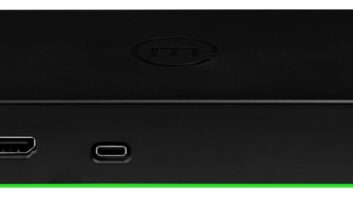TWICE: The number of net-new subscribers in the first half of 2006 hit 11.5 million, the second highest first-half net-new subscriber gain in the industry’s history, according to CTIA statistics. Penetration rose to 73.4 percent of the resident U.S. population, up from the 65 percent in the first half of 2005. What’s driving net-subscriber gains?
Bob Laikin, Brightpoint: The global wireless device industry continues to be healthy, and wireless penetration continues to rise. Based on industry sources, the average monthly number of net-new subscribers in 2006 reached approximately 40 million. The global wireless subscriber base hit 2.5 billion subscribers in early Q3 of 2006.
So what’s driving the wireless demand? Compelling form factors, features and application-rich multimedia wireless devices with color screens are. Also, higher megapixel embedded cameras, mobile TV, MP3 players and mobile devices fast becoming an extension of the desktop are some of the factors driving wireless penetration globally. Other factors such as handset subsidies by carriers, competitive rate plans, MVNOs marketing to their niche segments, and prepaid are contributing to the subscriber growth both in the United States and worldwide.
Mike Misuraca, American Wireless: Several factors are driving this growth: bundled minutes and share plans continue to pique interest; data applications are available that are viable and useful to consumers; a new flair of personalizing your own handset; and content, which is definitely more intriguing than ever.
We certainly expect that they will [grow], at least until the overall penetration rises in the next 24 months. Despite the predictions of rapid landline replacement, studies indicate that while some consumers are becoming more comfortable with a single-line or one-number service, it still only accounts for single-digit results, and consumers may be very reluctant to give up their landline service, which is something that they feel they can count on 24/7, doesn’t drop calls and offers home 911 location.
Suzanne Cross, Sony Ericsson: In the past year, one trend we saw helping to drive net-new subscriber gain was the availability of flexible spending plans. Previously those consumers stayed away from the wireless space because they were not interested in long-term commitments, high prices and/or the inconvenience of traditional prepaid. Now that pay-as-you-go plans are more widely available on a larger selection of handsets, these consumers are coming into the wireless fold.
TWICE: How has U.S. handset sell-through been in 2006 compared with 2005 in units and dollars?
Misuraca: For a relative activation-to-handset ratio, it appears to be on track for year-over-year growth. We expected to see handset revenues dip a bit due to the competitive pricing issues in the marketplace, but the new higher end handsets have offset this, and as a result, revenues have increased. A combination of things drove growth in 2006, including carrier promos, content, new handsets and the MVNO appeal.
Dale Sohn, Samsung: Several trends have been key drivers of growth and demand, including premium fashion and feature phones. On the fashion front, consumers are interested more than ever in having a well-designed phone that reflects their taste. On the features side, consumers are starting to use their phones as a main consumer electronics device for music, games, messaging, pictures and other multimedia features. As consumers broaden their usage habits, they upgrade their phones to reflect those habits.
TWICE: With penetration at about three-quarters of the total U.S. population, what are the realistic prospects for penetration rates to go much higher, and how will handset sales fare in such a high-penetration environment?
Laikin: There are countries around the world where wireless penetration has reached levels north of 95 percent and in some cases more than 100 percent. I believe the U.S. wireless penetration is about 70 percent, so there is significant potential for adding new subscribers in the next several years. Matured markets typically do well in a competitive environment with multitier products. Replacement starts to become a key factor driving sell-in demand in mature markets.
Misuraca: Handset sales will continue to rise, as will the number of users. With today’s advancements in technology, manufactures are supplying incredibly intuitive products that support an array of different applications offered by carriers.
Cross: We believe handset sales will remain robust, even with higher subscriber rates because research shows that more than 80 percent of handset sales are replacements of existing handsets. Consumers are upgrading their handsets more often because of new and attractive features like multi-megapixel camera phones, music phones, etc.
Sohn: There are always opportunities to increase our market share in mobile handsets. This is true even in countries where penetration rates are much higher than in the United States, such as Taiwan, Scandinavia or Japan. Even here, we see tremendous growth opportunities.
We can do this in the United States in a number of ways. For example, we can design phones that are specifically targeted for small but fast-growing niche markets. A recent example of this would be our work with GreatCall to produce the Jitterbug, which was developed for U.S. consumers looking for a simpler and easier to use cellphone.
TWICE: How will the launch of cellular services over the 1.7GHz and 2.1GHz AWS bands affect the size, weight, cost and performance of handsets that will incorporate multiple bands, including today’s 850MHz and 1,900MHz bands? When will we see such phones?
Misuraca: Technology is moving quickly, so anything is possible. Years ago, I’m not sure we thought we’d actually see TV in a [then] cellphone [now] wireless device, but it happened, and relatively quickly. It’s just a matter of time but more likely sooner than later.













